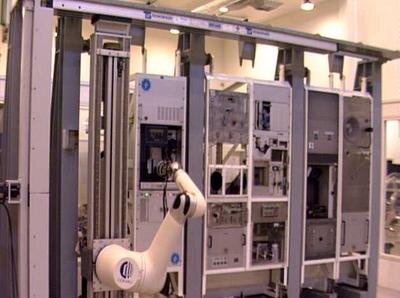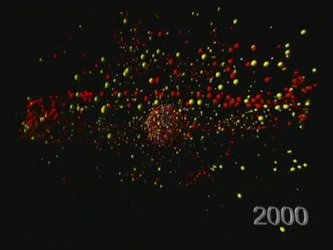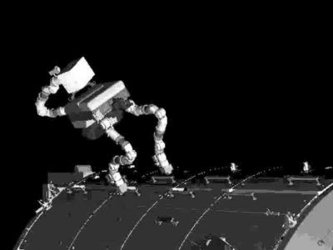Module Internal Robotics
The primary purpose of an orbital facility like the ISS is to carry out research in low gravity (so called micro-gravity). Most of the research is performed in the inhabited modules that form the ISS. Some of these modules are totally devoted to research and could in fact be called Space Laboratories. Space Laboratories are generally composed of separate facilities which investigate specific microgravity sciences (e.g. Material Science, Fluid Science, Biology and Physiology).
Facilities are generally made up of by storage areas, processing plants and diagnostic instruments. In operational terms, a typical cycle of scientific investigation can be broken in the following activities:
- Prepare facility for processing
- Retrieve test sample from storage area and place it in a processing plant
- Process the sample
- Retrieve the sample from plant and store it
The type and order of activities may change, according to the payload, however for a given payload these activities need to be performed for several samples. The need to repeat operations hinted the Automation and Robotics Section to investigate use of robots to handle the "flow" of samples in Space laboratories.
A&R for Space Laboratories

As a matter of fact the facilities ESA is preparing for the ISS contain a lot of A&R. Most of these facilities are designed to run experiments almost completely in Telescience, with scientists on ground interacting with the experiments on board of the ISS by means of telecommunication links. This is of course only possible because the facilities are internally automated. However astronauts (the crew) are needed to set-up the facility for the particular configuration required by the experiment.
What the A&R Section investigated was how to complement the internal facility automation with centralised robot system, shared by all the facilities, which would carry out the preparation of experiments.
Benefits of robots in Space Laboratory Automation

In the specific subject of Space Laboratory Automation robots, there are additional benefits:
- they allow allocating crew for tasks which require human unique skills and reasoning, dispensing them from fairly repetitive tasks which can be automated. Crew time is an extremely scarce resource as only 3 astronauts are normally onboard the ISS, spending most of their time in maintenance tasks.
- they can move with extremely low acceleration, thus preserving the acceleration environment during experiment execution. During experiments crew activity is normally stopped in the Space Laboratory so as not to "pollute" the microgravity environment.
A long history of developments

A first Industrial Study was initiated in 1987, “Robotics Spacecraft Servicing and Assembly” (ROSSA) followed by the “Equipment manipulation and Transportation “ (EMATS) study in 1988. Study and analysis work was put in practice with the realisation of 2 testbeds: the “Internal Automation and Robotics” (IARTTB), in 1990, and the “Columbus A&R Testbed” (CAT) in 1991. This last has evolved, through several additions, into the Internal A&R Testbed . Several R&D activities were initiated to investigate programming (e.g. ARTS) and operation (e.g. ROCAT) of the robot. In 1992 the A&R Section studied the “Biorobot”concept being a robot dedicated to a single payload. In 1993 A phase-A activity was finally initiated. The “Automated Manipulation and Transportation System” (AMTS) unfortunately did not continue towards an operational system due to the lack of support from the ESA programme responsible for ISS development. In the late 90's the Italian Space Agency (ASI) re-elaborated the Biorobot concept and named it “Payload Tutor” (PAT) . The system was conceptually designed with the help of ESA's A&R Section and proposed by ASI to NASA for a technology demonstration programme. Though the proposal was accepted, PAT did not materialised due to lack of funding. The Internal A&R Testbed at the A&R Laboratories showcases all the different technologies developed for the application of Module Internal Robotics.





